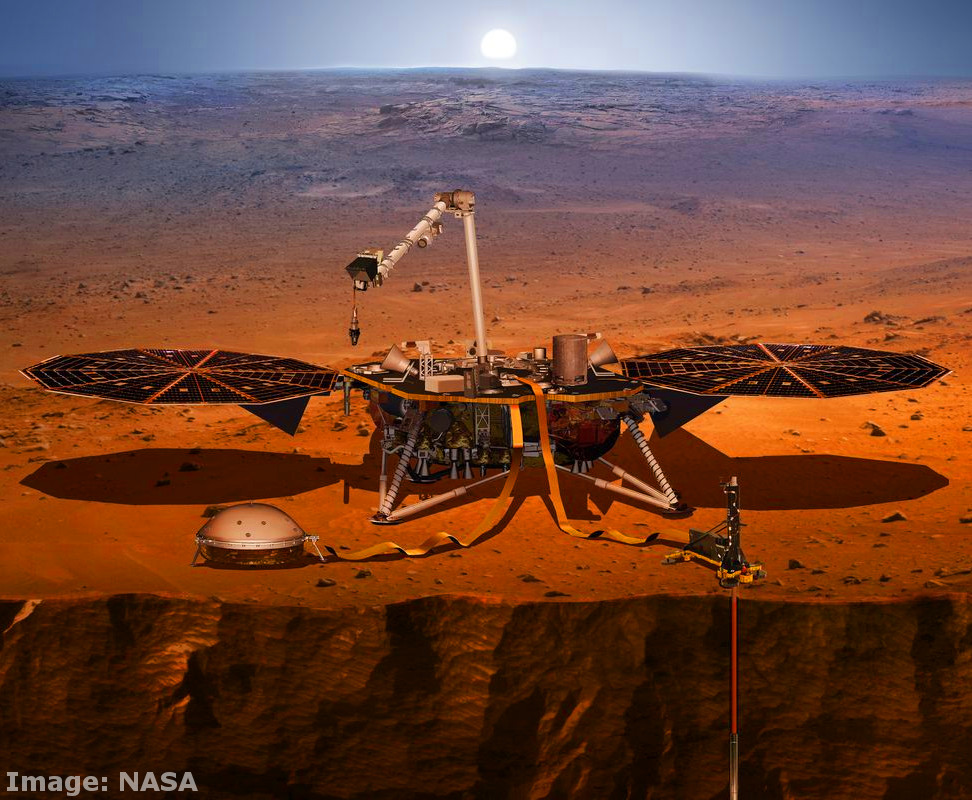NASA InSight takes flight
 NASA has launched a robotic geologist on its way to Mars.
NASA has launched a robotic geologist on its way to Mars.
NASA’s Mars InSight lander (Interior Exploration using Seismic Investigations, Geodesy and Heat Transport) will take over six months to travel the 485 million kilometres to Mars.
InSight will be the first mission to peer deep beneath the Martian surface, studying the planet's interior by measuring its heat output and listening for marsquakes.
It will use the seismic waves generated by marsquakes to develop a map of the planet’s deep interior.
The resulting insight into Mars’ formation will improve understanding of how other rocky planets, including Earth, were and are created.
Launching on the same rocket as InSight is a separate NASA technology experiment known as Mars Cube One (MarCO).
These two mini-spacecraft are the first test of miniaturized CubeSat technology in deep space.
They are designed to test new communications and navigation capabilities for future missions and may aid InSight communications.
During the six-month cruise phase of the mission, engineers will check out the spacecraft’s subsystems and science instruments, making sure its solar arrays and antenna are oriented properly, tracking its trajectory and performing manoeuvres to keep it on course.
InSight is scheduled to land on Mars just after 3pm EST on November 26, where it will conduct science operations until November 24, 2020, which equates to one year and 40 days on Mars, or nearly two Earth years.








 Print
Print